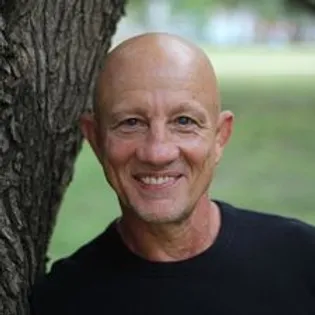
Resilience Isn’t Infinite — It’s Built Over Time, Not Willed in the Moment
Resilience Isn’t Infinite — It’s Built Over Time, Not Willed in the Moment
We live in a culture that glorifies grit. Push through. Hustle harder. Never quit. These phrases are practically stitched into the fabric of every performance-minded space — from the boardroom to the weight room.
But somewhere along the way, we began to confuse resilience with relentlessness.
And they’re not the same thing.
As someone who’s spent a lifetime working with high performers — in athletics, officiating, business, and coaching — I’ve come to see resilience in a different light. It’s not some badge of honor you earn from white-knuckling your way through adversity. It’s a capacity you build, and it doesn’t happen all at once.
Let me explain.
Why We Burn Out When We’re “Being Resilient”
We’ve been sold this idea that the most resilient people are the ones who never stop. They wake up early, go hard all day, stay late, show up the next morning and do it all again. No excuses.
I used to think that way too. In fact, I used to wear exhaustion like a badge of honor. If I was tired, it meant I was doing the work. If I felt overwhelmed, I must be doing something important.
But that version of resilience? It’s unsustainable.
And worse — it often hides disconnection.
Disconnection from your body. From your values. From your purpose. From the relationships that matter most.
That’s not resilience. That’s survival.
Real resilience is about being able to face challenges and stay whole while doing it.
Resilience = Capacity Management
What if we reframed resilience as capacity management?
Think of it this way: your nervous system, your energy, your mental focus, your emotional bandwidth — they all have limits. They fluctuate. They respond to stress. And if you don’t learn to respect those limits, you don’t get stronger… you just get depleted.
The best high performers I’ve worked with — whether they're athletes, CEOs, coaches, or busy parents — aren’t just tough. They’re intentional. They know when to lean in, and when to back off. They understand when to say yes and when to say no. They know when to rest, and they don’t feel guilty for doing it.
They’re not superhuman.
They’re just clear on one thing: Resilience isn’t about doing more — it’s about being able to do what matters most, when it matters most.5 Ways to Build Resilience Like a Muscle
So how do you do that? How do you build resilience without burning out?
Here are five simple (but powerful) strategies I use in my own life and with clients in the High Performance Living program:
1. Protect Your Energy Like You Protect Your Time
If something drains you consistently — a relationship, a routine, even a thought pattern — take it seriously. Your energy is a limited resource. Schedule time for recovery the same way you schedule meetings or workouts.
2. Master the Micro-Recovery
You don’t need a week-long vacation to recharge. Sometimes it’s 10 minutes of stillness, a short walk, or a few deep breaths between meetings. Micro-recoveries throughout the day keep your stress levels from boiling over.
3. Train Your Nervous System, Not Just Your Muscles
Most people train their body and ignore their brain and nervous system. Practices like mindfulness, cold exposure, breathwork, and proper sleep help build a resilient baseline. You bounce back faster because your system is used to adapting under pressure.
4. Define What “Matters Most”
Clarity is a performance enhancer. If you’re chasing five goals and none of them align with your values, resilience will feel like a slog. But when you’re clear on your purpose, showing up gets easier — even when it’s hard.
5. Build in Renewal, Not Just Rest
Rest is passive. Renewal is intentional. What fills you up? Is it being outdoors, having dinner with family, journaling, volunteering, unplugging for a weekend? Do more of that — on purpose.
Resilience Requires Responsibility
Here’s something most people won’t tell you: resilience isn’t something you either “have” or “don’t have.” It’s a byproduct of how well you take care of yourself over time.
When you don’t take ownership of your capacity, something (or someone) else will. You’ll react to pressure instead of responding with purpose. And eventually, your body or your relationships will tell you what your mind refused to acknowledge: you’re running on empty.
That’s why one of the cornerstones of my AOC Model — Ownership — is so tightly linked to this concept of resilience. Because without ownership, resilience becomes a trap.
With it, resilience becomes a weapon.
The Bottom Line
The next time you hear yourself say, “I just need to be more resilient,” pause and ask:
"Am I building capacity — or just pushing through?”
True resilience isn’t about pushing harder. It’s about becoming wiser about how and where you push — and making sure you’re strong enough to come back tomorrow and do it again.
Take care of your capacity.
Resilience is built over time, not willed in the moment.
That’s where real high performance lives.
High Performance Living Starts Here
In High Performance Living, I dive deeper into this idea — that resilience is not just about endurance, but about ownership of how we show up, how we recover, and how we lead our lives. HPL isn’t a program for the elite. It’s a way of living that’s available to anyone willing to do the work of building Awareness, Ownership, and Commitment in their own life.
If this message resonated with you, I invite you to explore the book and begin building your own version of high performance — one that includes capacity, clarity, and sustainability.
